|
The Film

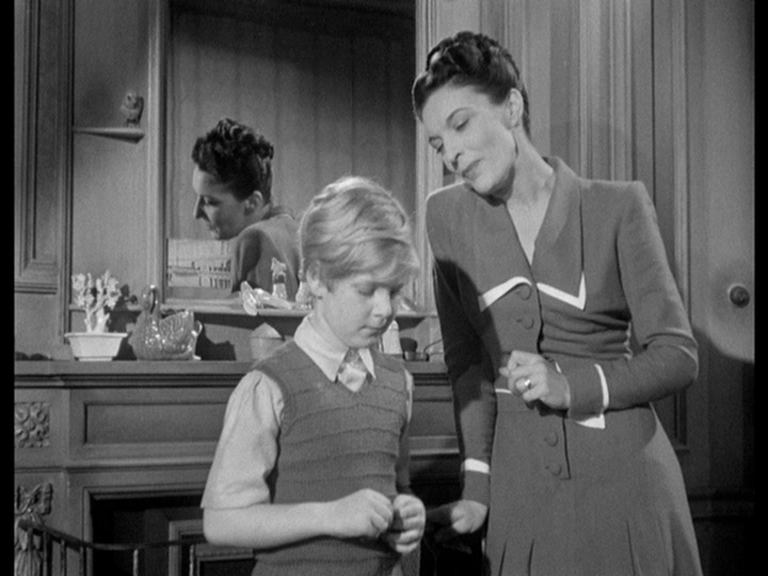 The Fallen Idol (Carol Reed, 1948) The Fallen Idol (Carol Reed, 1948)
Adapted from Graham Greene’s 1935 short story ‘The Basement Room’, Carol Reed’s 1948 film The Fallen Idol marked the first of three collaborations between Greene, who also scripted the adaptation, and Reed; the second collaboration between Greene and Reed would of course result in The Third Man (1949), and the third was Reed’s film version of Greene’s novel Our Man in Havana (1959). All three films were scripted by Greene, who in reference to The Fallen Idol praised Reed’s sympathetic handling of the source material, suggesting that Reed was ‘the only director I know with that particular warmth of human sympathy, the extraordinary feeling for the right face for the right part, the exactitude of cutting, and not the least important, the power of sympathizing with an author’s worries and an ability to guide him’ (Greene, quoted in Phillips, 1999: 168). Greene realised that to adapt his short story for the screen would necessitate some significant changes to the narrative, and the resulting film was reputedly Greene’s favourite of the film adaptations of his work.
‘The Basement Room’ and The Fallen Idol both revolve around a major theme of Greene’s work: that of infidelity and, more broadly, betrayal. As The Fallen Idol begins, eight year old Philippe (Bobby Henrey), the son of the French ambassador in London, is introduced perched at the top of the staircase in the lobby. Philippe looks down as his father, the ambassador, leaves to stay with Philippe’s mother, who is in hospital. Philippe is left in the care of the embassy’s butler Baines (Ralph Richardson) and his wife (Sonia Dresdel), the embassy’s housekeeper.
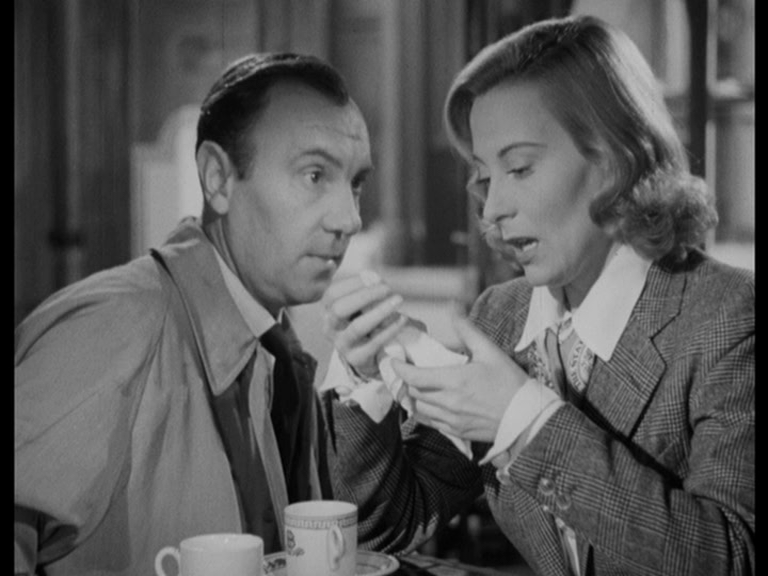 Philippe admires Baines (who regales the boy with tall tales of his adventures in Africa) to the extent that Philippe views Baines as a surrogate father. On the other hand, Mrs Baines is extraordinarily cruel to the child, accusing him of dishonesty and chastising him at every opportunity. One day, Philippe escapes from the embassy against the wishes of Mrs Baines; he encounters Baines and a typist from the embassy, Julie, in a café. Baines and Julie are clearly involved in an affair, but Baines tells Philippe that Julie is his niece, and Philippe should on no account tell Mrs Baines that he saw Baines and Julie together (‘You see, Mrs Baines, she… she doesn’t like Julie’, Baines says). Philippe admires Baines (who regales the boy with tall tales of his adventures in Africa) to the extent that Philippe views Baines as a surrogate father. On the other hand, Mrs Baines is extraordinarily cruel to the child, accusing him of dishonesty and chastising him at every opportunity. One day, Philippe escapes from the embassy against the wishes of Mrs Baines; he encounters Baines and a typist from the embassy, Julie, in a café. Baines and Julie are clearly involved in an affair, but Baines tells Philippe that Julie is his niece, and Philippe should on no account tell Mrs Baines that he saw Baines and Julie together (‘You see, Mrs Baines, she… she doesn’t like Julie’, Baines says).
As the tensions between Mrs Baines, Philippe and Baines escalate, Mrs Baines kills Philippe’s pet snake by throwing it into the furnace, and she blackmails Philippe into telling her of Baines’ meeting with Julie. Cognisant of Baines’ infidelity, Mrs Baines concocts a scenario in which Baines believes her to have left the embassy to stay with relatives for a period of time. Baines invites Julie to stay at the embassy whilst Mrs Baines is away, and during the night Mrs Baines makes her presence known. Julie departs; Mrs Baines strikes Philippe and confronts Baines. As Philippe watches from the fire escape, his view partially obscured as he moves from one position to another, Mrs Baines falls from the upper landing. Believing Baines to have pushed Mrs Baines, Philippe flees from the embassy. Barefoot and in his pyjamas, Philippe encounters a policeman who takes the young boy to the police station. Philippe refuses to speak, but when news of Mrs Baines’ death arrives at the police station, the policemen realise that Philippe is the young boy from the embassy. In the ensuing investigation into Mrs Baines’ death, Philippe is torn between his loyalty to Baines and the need to tell the truth of the events – at least, according to his perception of what happened.
For Barry Forshaw, The Fallen Idol is ‘about a child’s first glimpse into adult hypocrisy’ (Forshaw, 2012: 30). Similarly, David Lodge has observed that both Greene’s short story and The Fallen Idol ‘are essentially about ‘a child's innocence prematurely exposed to adult experience, but this dramatic formula is worked out differently in each medium’ (Lodge, 2006: np). In Greene’s story, there are subtle moments of prolepsis to the point of Phillip’s death at the age of 67, which reinforce the impact that the moment of trauma from his childhood (Baines’ insistence that Phillip keep secret his relationship with Emmy; Mrs Baines’ death) had upon the rest of his life. As Lodge suggests, the story contains an ‘essentially Freudian meaning’ in its exploration of ‘the psychological damage caused by suppressed memory of a trauma’ (ibid.). In The Fallen Idol, on the other hand, the story never leaves Philippe’s childhood, thus keeping the audience focused on what is happening to Philippe and the other characters in the diegetic present, rather than encouraging us to reflect on its impact on Philippe’s adulthood.
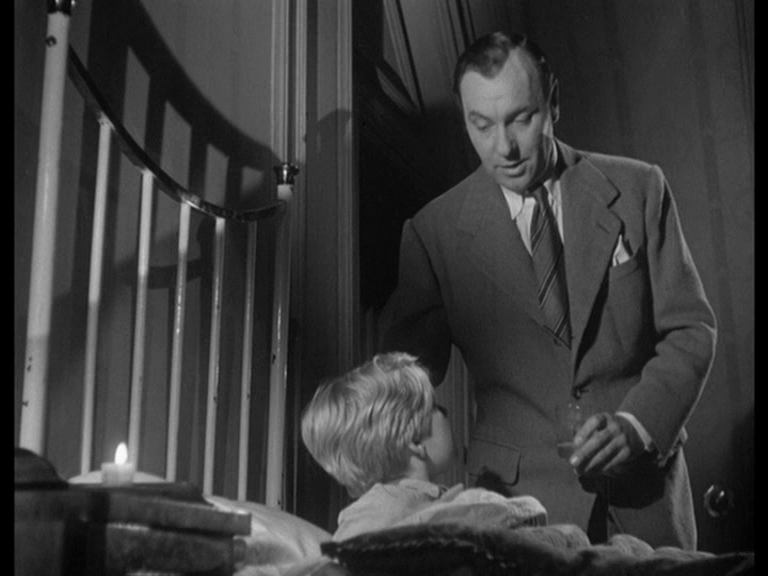 Baines is clearly the ‘fallen idol’ of the film’s title. Baines tells Philippe of exciting adventures in Africa that the audience knows to be untrue but which Philippe takes at face value. When Philippe misperceives the death of Mrs Baines and, later, realises that Baines’ tales may not be wholly true, he finds his belief in his idol subtly undermined; but Philippe continues to show a devotion towards Baines, who is after all the only adult who has given him any time and treated him with any respect. Baines and Mrs Baines share a relationship that is rooted in antagonism. ‘We only make each other miserable’, Baines tells his wife whilst Philippe eavesdrops from the landing above the kitchen, ‘It’s been years now since a day’s gone by without some blessed row’. Mrs Baines attempts to blackmail her husband emotionally into keeping their marriage intact, suggesting to him that if their marriage were to end, she would commit suicide and that Baines would read about her death in the Sunday papers: ‘That’d make you happy’, she declares. For his part, Baines resents Mrs Baines’ stranglehold over his life. Baines is clearly the ‘fallen idol’ of the film’s title. Baines tells Philippe of exciting adventures in Africa that the audience knows to be untrue but which Philippe takes at face value. When Philippe misperceives the death of Mrs Baines and, later, realises that Baines’ tales may not be wholly true, he finds his belief in his idol subtly undermined; but Philippe continues to show a devotion towards Baines, who is after all the only adult who has given him any time and treated him with any respect. Baines and Mrs Baines share a relationship that is rooted in antagonism. ‘We only make each other miserable’, Baines tells his wife whilst Philippe eavesdrops from the landing above the kitchen, ‘It’s been years now since a day’s gone by without some blessed row’. Mrs Baines attempts to blackmail her husband emotionally into keeping their marriage intact, suggesting to him that if their marriage were to end, she would commit suicide and that Baines would read about her death in the Sunday papers: ‘That’d make you happy’, she declares. For his part, Baines resents Mrs Baines’ stranglehold over his life.
Mrs Baines’ cruelty knows no bounds. At the start of the film, not long after Philippe’s father has left the embassy, she chastises the boy for ‘making marks’ on the floor with chalk. When Philippe gently protests his innocence, Mrs Baines criticises him: ‘You know what happens to little boys that tell lies. I won’t have any vermin in any house I run’. Later, when she is attempting to persuade Philippe to tell her about Baines’ ‘secret’, Mrs Baines tries to bribe the boy with the promise of a Meccano set and tried to trade on her relationship with the child. ‘We’ve always been friends, haven’t we?’, she tell the boy. ‘No’, Philippe replies. Mrs Baines’ approach to Philippe rapidly turns cruel: ‘You’re not such a child as you pretend to be’, she chastises the boy, ‘You’ve got a nasty, wicked mind and it ought to be beaten out of you’. Mrs Baines is disliked by the embassy’s cleaners, who comment on her obsession with dirt and cleanliness, and she is equally vindictive towards her husband. When Philippe lags behind in eating his meal, Mrs Baines surmises that he has eaten between meals. She chastises Baines, telling him ‘I’m sick to death of your ways, spoiling the boy’. Philippe intervenes, protesting Baines’ innocence. ‘Lying again, Master Philippe?’, Mrs Baines mocks. ‘There’s lies and there’s lies’, Baines tells his wife quietly. ‘What do you mean by that?’, she responds sharply. ‘Some lies are just kindness’, Baines informs his wife.
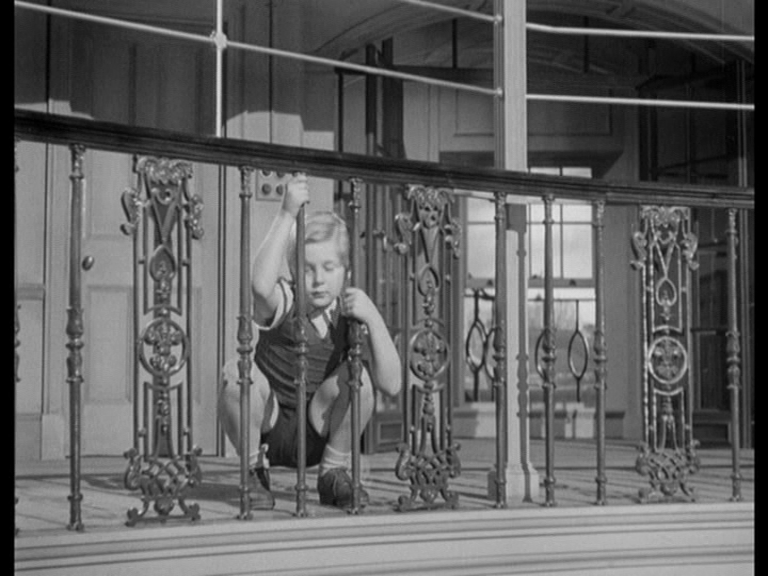 The premise within Baines’ suggestion that ‘Some lies are just kindness’ forms the locus of the narrative events that follow, as Baines asks Philippe to keep his meeting with Julie a secret, and later Mrs Baines tells Philippe to keep her awareness of Baines’ relationship with Julie a secret too. Throughout the film, Philippe is positioned between the truth and deception, asked by adults to keep secrets about adult relationships that, owing to his child’s understanding of the world, he doesn’t fully comprehend. Various types of deception are presented within the film: Baines’ infidelity with Julie; the tall tales Baines spins for Philippe, which are in some ways ‘just kindness’; Baines’ and Mrs Baines’ attempts to get Philippe to present untruths in favour of their respective positions; and Philippe’s attempts to lie to the police in order to extricate Baines from the suggestion that he murdered his wife (which Philippe believes to be the case). Some of these lies are more malicious than others, but one moment stands out as particularly cruel. In one sequence, as Philippe passes Mrs Baines he apologises to her for, in an earlier scene, telling her that he hated her; Mrs Baines acknowledges his apology politely, before continuing on her way. Unbeknownst to Philippe, whilst offering a mealy-mouthed acceptance of his apology Mrs Baines is conducting her own form of deception, much more extreme than his: she is on her way to the furnace, where she burns alive Philippe’s precious pet snake MacGregor. The premise within Baines’ suggestion that ‘Some lies are just kindness’ forms the locus of the narrative events that follow, as Baines asks Philippe to keep his meeting with Julie a secret, and later Mrs Baines tells Philippe to keep her awareness of Baines’ relationship with Julie a secret too. Throughout the film, Philippe is positioned between the truth and deception, asked by adults to keep secrets about adult relationships that, owing to his child’s understanding of the world, he doesn’t fully comprehend. Various types of deception are presented within the film: Baines’ infidelity with Julie; the tall tales Baines spins for Philippe, which are in some ways ‘just kindness’; Baines’ and Mrs Baines’ attempts to get Philippe to present untruths in favour of their respective positions; and Philippe’s attempts to lie to the police in order to extricate Baines from the suggestion that he murdered his wife (which Philippe believes to be the case). Some of these lies are more malicious than others, but one moment stands out as particularly cruel. In one sequence, as Philippe passes Mrs Baines he apologises to her for, in an earlier scene, telling her that he hated her; Mrs Baines acknowledges his apology politely, before continuing on her way. Unbeknownst to Philippe, whilst offering a mealy-mouthed acceptance of his apology Mrs Baines is conducting her own form of deception, much more extreme than his: she is on her way to the furnace, where she burns alive Philippe’s precious pet snake MacGregor.
The setting which features in most of the film, the embassy, is depicted as ‘vast, mysterious, almost alive – the way a child but few grown-ups would see it’ (Drazin, 2007: 66). When Baines and Julie play hide and seek throughout the embassy with Philippe (prior to Mrs Baines’ confrontation with her husband), the sequence is presented via canted angles and chiaroscuro lighting which convey the chaos of the situation; the photography adds an element of unease to the sequence, conveying the anarchy of this child’s game and building to a dramatic crescendo which comes in the form of Philippe’s realisation that Mrs Baines is still within the embassy.
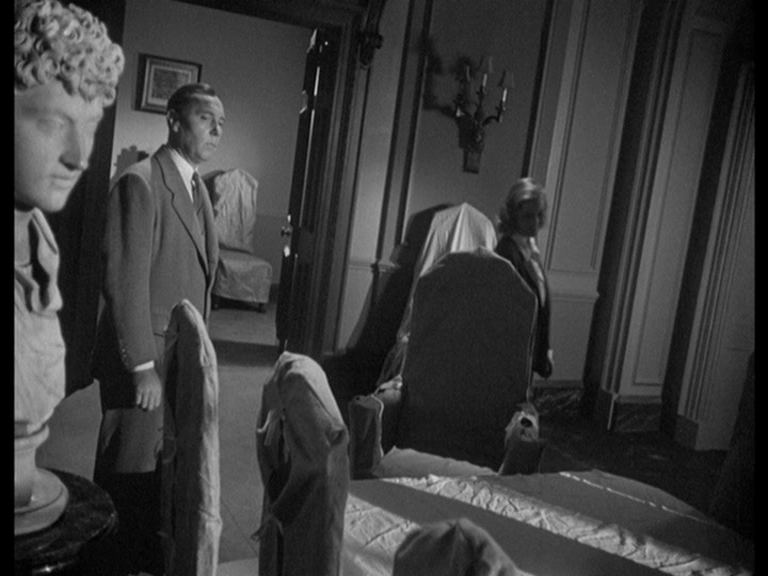 The vast majority of the film, with the exception of a small handful of scenes, is presented from the perspective of Philippe. We share his perception of the world, if not his direct point-of-view. In a number of sequences, he sits at the top of a stairwell, gazing down on the adults below and eavesdropping on their conversations; the perspective the audience shares with him is anchored via the recurring intercutting of close-ups of Philippe’s face, peering through balustrades as if trapped in a cage, and high-angle shots from his point-of-view that look down upon the adult characters in the rooms below. This is how the film begins, with Philippe watching the departure of his father. (Reed reputedly had a magician perform magic tricks as Bobby Henrey looked down from his perch atop the staircase in order to facilitate the look of warmth that moves across Philippe’s face when he sees Baines in the lobby of the embassy; see Levison, 1948: 107). When Philippe encounters Baines and Julie in the café, we are presented with his perspective of their encounter. As if eavesdropping with Philippe, we hear snatches of the conversation that is taking place between Baines and Julie (Julie saying, ‘I wish I were dead’; Baines telling her, ‘It wouldn’t work. But things have got to be said’) – enough for an adult understanding of what is taking place, but not enough for a child to comprehend the relationship between Baines and Julie. The vast majority of the film, with the exception of a small handful of scenes, is presented from the perspective of Philippe. We share his perception of the world, if not his direct point-of-view. In a number of sequences, he sits at the top of a stairwell, gazing down on the adults below and eavesdropping on their conversations; the perspective the audience shares with him is anchored via the recurring intercutting of close-ups of Philippe’s face, peering through balustrades as if trapped in a cage, and high-angle shots from his point-of-view that look down upon the adult characters in the rooms below. This is how the film begins, with Philippe watching the departure of his father. (Reed reputedly had a magician perform magic tricks as Bobby Henrey looked down from his perch atop the staircase in order to facilitate the look of warmth that moves across Philippe’s face when he sees Baines in the lobby of the embassy; see Levison, 1948: 107). When Philippe encounters Baines and Julie in the café, we are presented with his perspective of their encounter. As if eavesdropping with Philippe, we hear snatches of the conversation that is taking place between Baines and Julie (Julie saying, ‘I wish I were dead’; Baines telling her, ‘It wouldn’t work. But things have got to be said’) – enough for an adult understanding of what is taking place, but not enough for a child to comprehend the relationship between Baines and Julie.
The film hinges on Philippe’s naïve interpretation of a number of events: his misunderstanding of the relationship between Baines and Julie, and his misperception of the death of Mrs Baines. Philippe’s misreading of the relationship between Baines and Julie is presented gently, so the audience is aware of the irony without a sense of Philippe’s misperception being mocked. Charles Drazin has referred to the film’s depiction of childhood as ‘one of the most poignant and convincing ever to have been put on the screen’ (Drazin, op cit.: 66). The film’s audience, Drazin suggests, has ‘the benefit of the adult’s eye, so we can see how Felipe [sic] misreads the adult world, but at the same time we share his puzzlement and experience the sheer powerlessness of being a child – wanting to have an effect but not having any effect’ (ibid.).
 When Philippe witnesses the death of Mrs Baines, his view of the event is partial. He watches the argument between Baines and his wife from the fire escape, looking in to the building from outside. As he moves between the landings of the fire escape, heading towards the ground level, he finds his view of the argument obscured; he fails to see Mrs Baines fall from the upper landing, instead believing that Baines has pushed her to her death. In some respects the film’s depiction of a child who witnesses what he believes to be a crime from a fire escape finds its corollary in the roughly contemporaneous American film noir The Window (Ted Tetzlaff, 1949). In that film, a nine year old boy, Tommy Woodry (Bobby Driscoll), decides to sleep on the fire escape of his family’s Manhattan apartment and, from that elevated position, witnesses a murder committed by his neighbours. Much as Philippe struggles to communicate his understanding of events to both the participants and the police investigating Mrs Baines’ death, however, in The Window owing to little Tommy’s tendency to tell tall tales, when he attempts to report the crime nobody is willing to believe him, including his own parents (Barbara Hale and Arthur Kennedy). Both films offer a variation on the old fable of the boy who cried wolf – though in The Window Tommy has an accurate perception of what has taken place and possesses knowledge which escapes the adult characters, whereas in The Fallen Idol Philippe’s comprehension of what he sees is naïve and leads to a misunderstanding of the events themselves. (Aside from, of course, authorial intention, the differences between Philippe and Tommy’s understanding of the world may be seen as an index of the cultural and class-based differences between the two boys: Philippe is the sheltered son of the French ambassador in London, whereas Tommy is a streetwise working-class boy from Manhattan.) The sense of a malicious plot that the protagonist misinterprets, owing to a naïve perception of the events at hand, recurs throughout a number of later neo-noir pictures too, including Francis Ford Coppola’s The Conversation (1974). When Philippe witnesses the death of Mrs Baines, his view of the event is partial. He watches the argument between Baines and his wife from the fire escape, looking in to the building from outside. As he moves between the landings of the fire escape, heading towards the ground level, he finds his view of the argument obscured; he fails to see Mrs Baines fall from the upper landing, instead believing that Baines has pushed her to her death. In some respects the film’s depiction of a child who witnesses what he believes to be a crime from a fire escape finds its corollary in the roughly contemporaneous American film noir The Window (Ted Tetzlaff, 1949). In that film, a nine year old boy, Tommy Woodry (Bobby Driscoll), decides to sleep on the fire escape of his family’s Manhattan apartment and, from that elevated position, witnesses a murder committed by his neighbours. Much as Philippe struggles to communicate his understanding of events to both the participants and the police investigating Mrs Baines’ death, however, in The Window owing to little Tommy’s tendency to tell tall tales, when he attempts to report the crime nobody is willing to believe him, including his own parents (Barbara Hale and Arthur Kennedy). Both films offer a variation on the old fable of the boy who cried wolf – though in The Window Tommy has an accurate perception of what has taken place and possesses knowledge which escapes the adult characters, whereas in The Fallen Idol Philippe’s comprehension of what he sees is naïve and leads to a misunderstanding of the events themselves. (Aside from, of course, authorial intention, the differences between Philippe and Tommy’s understanding of the world may be seen as an index of the cultural and class-based differences between the two boys: Philippe is the sheltered son of the French ambassador in London, whereas Tommy is a streetwise working-class boy from Manhattan.) The sense of a malicious plot that the protagonist misinterprets, owing to a naïve perception of the events at hand, recurs throughout a number of later neo-noir pictures too, including Francis Ford Coppola’s The Conversation (1974).
There are some wonderfully blackly comic asides involving the embassy’s two housekeepers. ‘These foreigners like a bit of dirt’, one of the cleaners observes near the start of the film. Later, as the police are investigating the death of Mrs Baines at the embassy, the two cleaners are scrubbing the marble steps. ‘Poor Mrs Baines’, one of the cleaners says. ‘Down these very stairs’, her colleague declares, ‘I can almost see her. Can’t you?’ ‘Yes’, the first cleaner says, ‘I expect her neck was snapped like a matchstick. Do you see any blood?’ ‘There wouldn’t be any blood if her neck was broken’, the second cleaner observes. ‘Might be a little if the bone came through’, the first cleaner says. ‘Treacherous stuff, this marble’, the second cleaner declares without a trace of irony, ‘I wouldn’t have it in my house’.
The film is uncut and runs for 91:55 mins (PAL).
Video
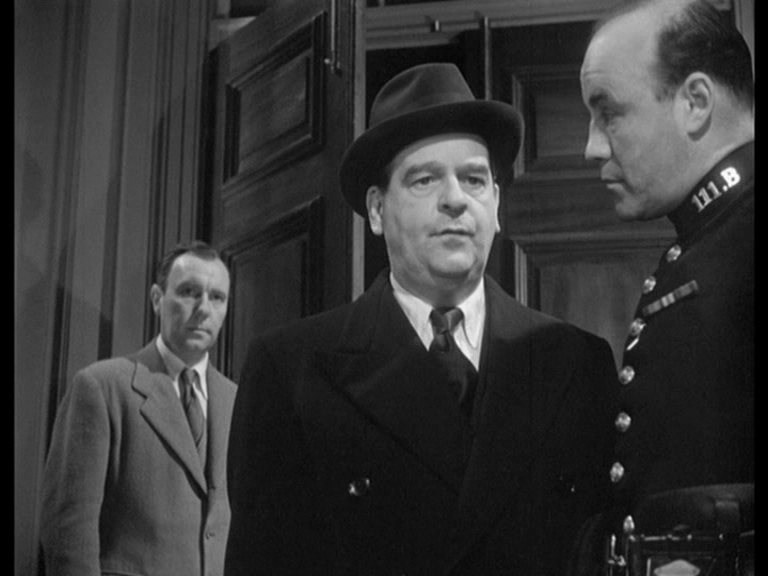 Presented in its original aspect ratio of 1.37:1, The Fallen Idol’s monochrome photography is nicely captured on this DVD release. It’s based on a new restoration of the film which is clean and clear of damage and debris. Contrast levels are nicely-balanced, with strong and defined midtones being present. There is a fairly bold vertical line which appears in some sequences, something which is notoriously difficult to remove in film restoration work. In all, it’s a very pleasing presentation. Presented in its original aspect ratio of 1.37:1, The Fallen Idol’s monochrome photography is nicely captured on this DVD release. It’s based on a new restoration of the film which is clean and clear of damage and debris. Contrast levels are nicely-balanced, with strong and defined midtones being present. There is a fairly bold vertical line which appears in some sequences, something which is notoriously difficult to remove in film restoration work. In all, it’s a very pleasing presentation.
NB. Some larger screen grabs are included at the bottom of this review.
Audio
Audio is presented via a Dolby Digital 2.0 mono track. This is clear, with dialogue audible throughout. Optional English subtitles for the Hard of Hearing are also included.
Extras
Extras include:
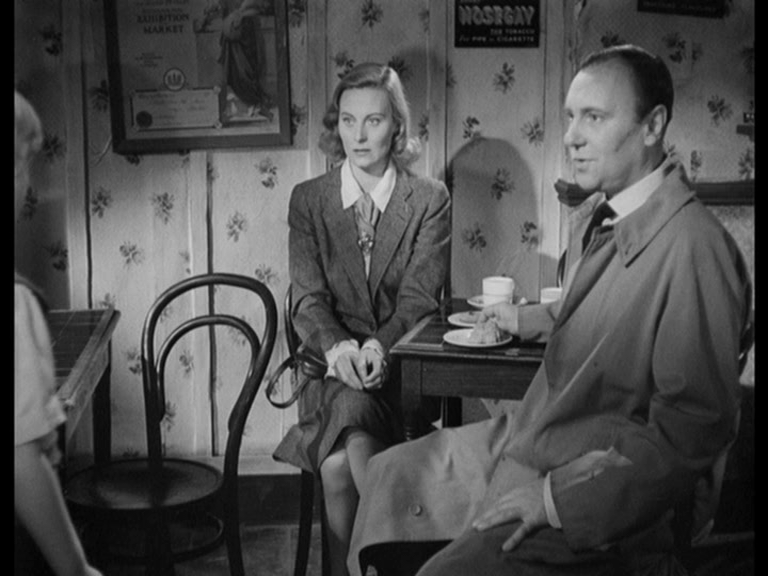 - An Interview with Robert Henrey (17:40). In a new interview, Henrey talks about his life and career, and he reflects on his role in the film, and he also discusses his interactions with some of the cast and crew during the production. - An Interview with Robert Henrey (17:40). In a new interview, Henrey talks about his life and career, and he reflects on his role in the film, and he also discusses his interactions with some of the cast and crew during the production.
- Guy Hamilton Remembers The Fallen Idol (15:28). This interview with Hamilton, who worked as an assistant director on the film, features Hamilton reflecting on his working relationship with Carol Reed. He discusses the difficulties in lighting some of the sequences in the film owing to the slowness of the film stocks used during production. Hamilton also comments on Henrey’s performance as Philippe.
- Locations Featurette with Richard Dacre (12:27). Here, Dacre visits some of the locations used during the production of the film.
- Interview with Film Historian Charles Drazin (20:39). In this interview, Drazin discusses some of the history behind the film’s production and examines its relationship with Graham Greene’s short story. He also talks about the production of the film and its reception.
- Interview with Richard Ayoade (18:01). Ayoade talks about the relationship between The Fallen Idol, Odd Man Out and The Third Man. He suggests that the latter two films differ from Odd Man Out in their ‘lightness of touch’ which is partially a product of Greene’s writing. Ayoade also talks about Carol Reed’s reputation, and discusses the differences between Reed’s film and Greene’s story – suggesting that the film doesn’t present the events that Philippe is a part of as having the same ‘crippling’ effect they have upon young Phillip in ‘The Basement Room’.
- Restoration Comparison (1:03). This is simply a montage of clips from the film, offering a side-by-side comparison of the original scan with the final restoration.
Overall
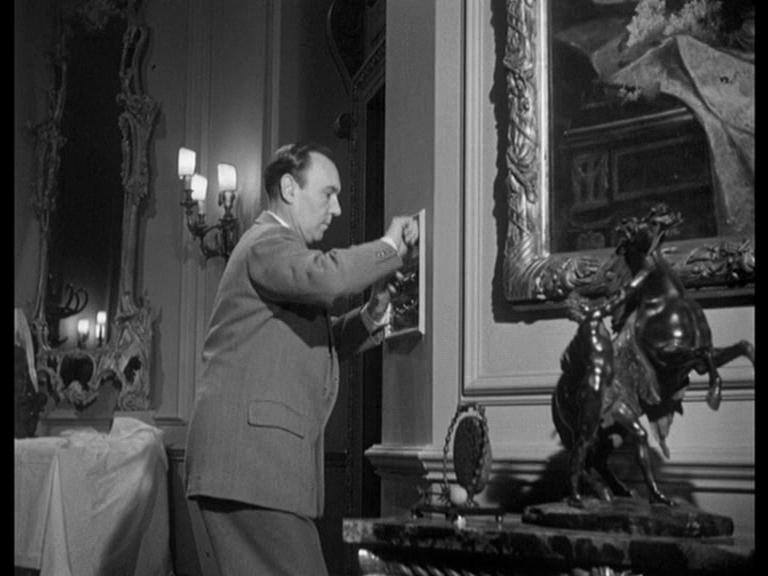 The Fallen Idol is a haunting film about a child’s encounter with the adult world. Philippe is utterly confused by his experiences: by the end of the film, he tells Julie, ‘We’ve got to think of lies and tell them all the time, otherwise they [the police] will find out the truth [about Baines and his wife]’. As the film ends, one of the detectives asks Philippe, ‘Shall I tell you a secret?’ ‘No!’, Philippe asserts and runs away, having learnt his lesson. It’s a beautiful film, arguably the equal of The Third Man but very different in tone to the short story on which it is based – largely owing to the film’s omission of the moments of prolepsis/flashforwards to the old age of the child protagonist which Greene includes in ‘The Basement Room’. The Fallen Idol is a haunting film about a child’s encounter with the adult world. Philippe is utterly confused by his experiences: by the end of the film, he tells Julie, ‘We’ve got to think of lies and tell them all the time, otherwise they [the police] will find out the truth [about Baines and his wife]’. As the film ends, one of the detectives asks Philippe, ‘Shall I tell you a secret?’ ‘No!’, Philippe asserts and runs away, having learnt his lesson. It’s a beautiful film, arguably the equal of The Third Man but very different in tone to the short story on which it is based – largely owing to the film’s omission of the moments of prolepsis/flashforwards to the old age of the child protagonist which Greene includes in ‘The Basement Room’.
Studiocanal’s presentation of the film on this new DVD release is excellent and contains some superb contextual material, making this release a pretty essential purchase for fans of British cinema.
References:
Drazin, Charles, 2007: The Finest Years: British Cinema of the 1940s. London: I B Tauris
Forshaw, Barry, 2012: British Crime Film: Subverting the Social Order. London: Palgrave Macmillan
Levison, Francis, 1948: ‘A staggering performance’. Life (13 December, 1948): 105-8
Lodge, David, 2006: ‘Did the butler do it?’ [Online.] http://www.theguardian.com/books/2006/nov/04/film
Phillips, Gene, 1999: Major Film Directors of the American and British Cinema. London: Associated University Presses (Revised Edition)
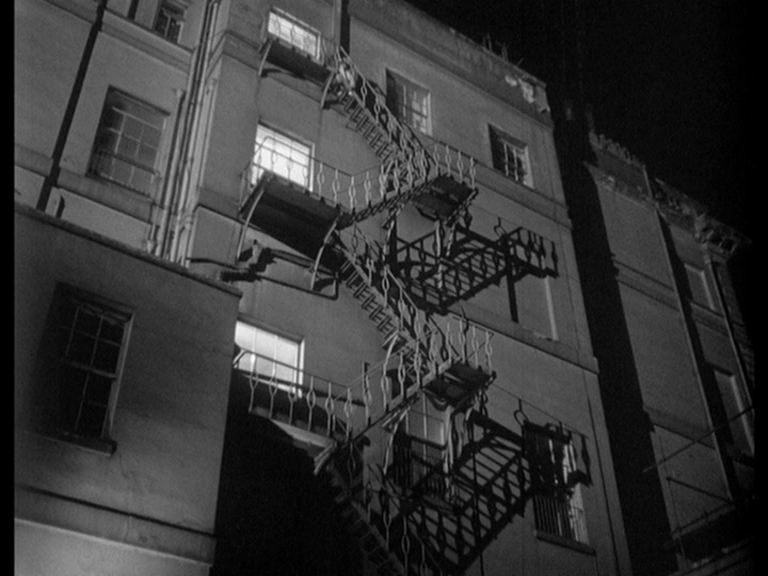
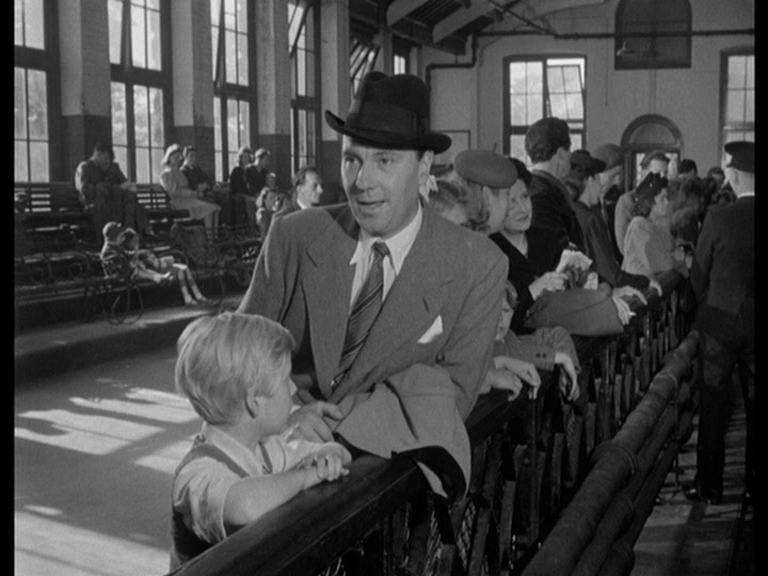

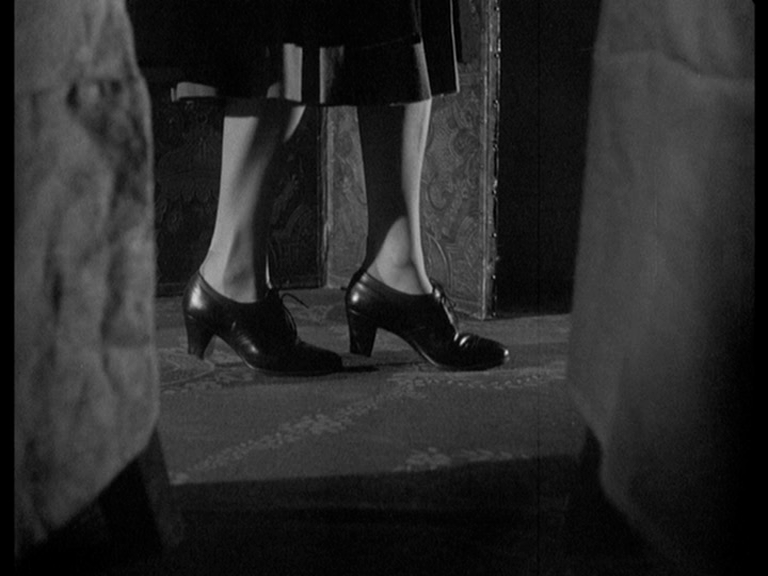
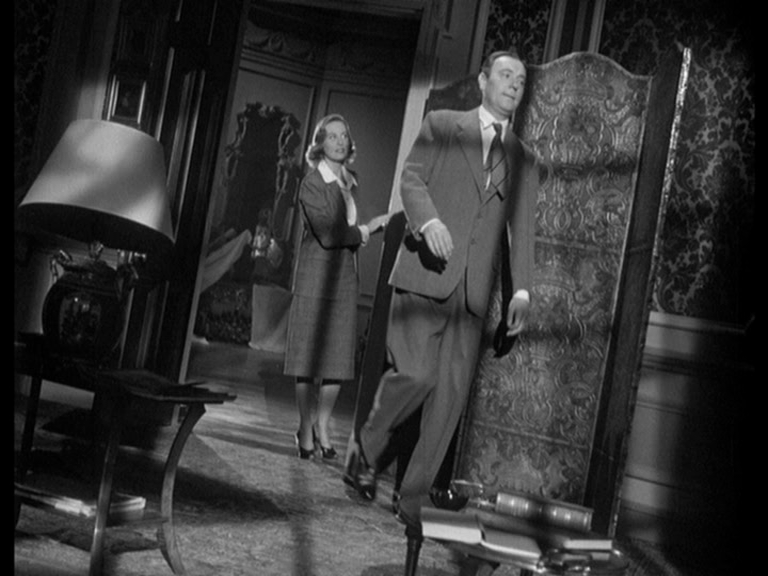

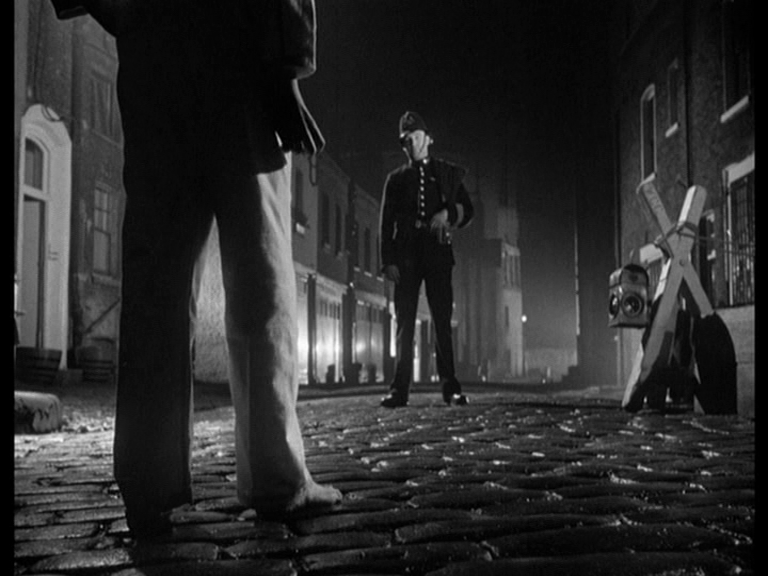

|


